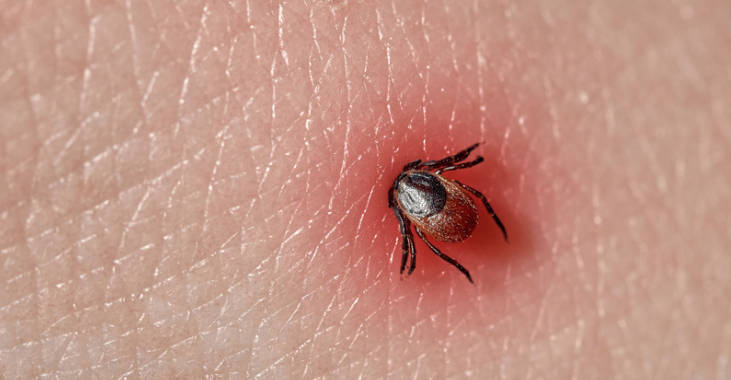Lyme Disease Rash: Symptoms, and Prevention

Lyme disease is a tick-borne illness caused by the bacterium Borrelia burgdorferi. Borrelia rash, also known as erythema migrans (EM), is a distinctive skin rash that often accompanies Lyme disease, a tick-borne illness caused by the bacterium Borrelia burgdorferi. Recognizing the symptoms of Borrelia rash is crucial for early diagnosis and treatment of Lyme disease. In this blog, we’ll explore what Borrelia rash looks like, its underlying causes, and the importance of prompt medical attention for individuals experiencing this rash.
What is Lyme Disease Rash?
Borrelia rash, or erythema migrans (EM), is the rash that develops in approximately 70-80% of individuals infected with Lyme disease. EM typically appears within 3 to 30 days after a tick bite and is often the first sign of Lyme disease. The rash usually begins as a small red bump or papule at the site of the tick bite. Then gradually expands over time, forming a circular or oval-shaped lesion with a distinctive bull’s-eye appearance. The central area may clear, leaving a red outer ring with a pale center. However, not all Borrelia rashes have a bull’s-eye appearance, and some may appear uniformly red or have other variations in appearance.
Identifying Lyme Disease Rash:
Here are some key characteristics to look for when identifying EM:
- Bull’s-eye Pattern: EM has a distinctive bull’s-eye or target-like appearance, surrounded by concentric rings of redness.
- Redness and Swelling: The rash appears as a red, raised lesion with surrounding redness and inflammation. It may feel warm to the touch and may be accompanied by itching or burning.
- Gradual Expansion: The rash typically expands slowly over time, sometimes reaching several inches in diameter. It may continue to grow larger over the course of several days to weeks.
- Location: The rash usually occurs at the site of the tick bite, although it can sometimes develop in other areas of the body.
Preventing Lyme Disease Rash:
Preventing Lyme disease rash begins with avoiding tick bites and reducing exposure to areas where ticks are commonly found. Here are some essential prevention tips:
- Wear Protective Clothing: Dress in light-colored clothing with long sleeves and pants tucked into socks or boots to create a barrier against ticks. Consider treating clothing with permethrin for added protection.
- Perform Tick Checks: After spending time outdoors, thoroughly check your body and clothing for ticks, paying close attention to areas such as the scalp, hairline, armpits, groin, and behind the ears.
- Remove Ticks Promptly: If you find a tick attached to your skin, use fine-tipped tweezers to grasp the tick and gently pull upward with steady pressure. Cleanse the bite area with soap and water and monitor for signs and other symptoms.
- Stay on Designated Trails: When hiking or walking in wooded or grassy areas, stay on designated trails.
Conclusion:
Lyme disease rash, or erythema migrans, is a telltale sign of Lyme disease and warrants prompt medical attention. By knowing what to look for and taking steps to prevent tick bites, you can reduce the risk of Lyme disease transmission. If you suspect you may have Lyme disease rash, seek medical evaluation and treatment from a healthcare practitioner. With early detection and appropriate treatment, most cases of Lyme disease can be effectively treated, leading to a full recovery.